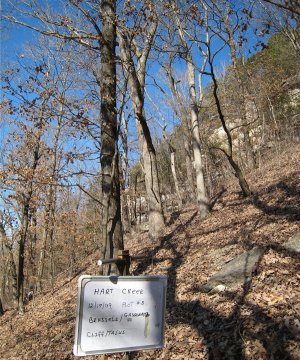Talus Footslope Forest
Scenario model
Current ecosystem state
Select a state
Management practices/drivers
Select a transition or restoration pathway
- Transition T1A More details
- Restoration pathway R2A More details
-
No transition or restoration pathway between the selected states has been described
Target ecosystem state
Select a state
Description
Talus forests occur in landscape positions on lower, steep slopes in the deeper valleys. Although fire infrequently spread (estimated every 10 to 25 years) into this reference community the resulting canopy is still somewhat open (50 to 70 percent canopy cover), tall (80 to 90 feet), and dominated by woody species such as chinkapin oak, northern red oak, and American basswood.
Submodel
Description
Single tree selection timber harvests are common in this state and often results in removal of the most productive trees (high grading) in the stand leading to poorer quality timber and a shift in species composition away from more valuable oak species. More shade tolerant species such as sugar maple tend to increase in dominance after repeated harvests.
Submodel
Mechanism
This transition typically results from periodic timber harvesting.
Model keys
Briefcase
Add ecological sites and Major Land Resource Areas to your briefcase by clicking on the briefcase (![]() ) icon wherever it occurs. Drag and drop items to reorder. Cookies are used to store briefcase items between browsing sessions. Because of this, the number of items that can be added to your briefcase is limited, and briefcase items added on one device and browser cannot be accessed from another device or browser. Users who do not wish to place cookies on their devices should not use the briefcase tool. Briefcase cookies serve no other purpose than described here and are deleted whenever browsing history is cleared.
) icon wherever it occurs. Drag and drop items to reorder. Cookies are used to store briefcase items between browsing sessions. Because of this, the number of items that can be added to your briefcase is limited, and briefcase items added on one device and browser cannot be accessed from another device or browser. Users who do not wish to place cookies on their devices should not use the briefcase tool. Briefcase cookies serve no other purpose than described here and are deleted whenever browsing history is cleared.
Ecological sites
Major Land Resource Areas
The Ecosystem Dynamics Interpretive Tool is an information system framework developed by the USDA-ARS Jornada Experimental Range, USDA Natural Resources Conservation Service, and New Mexico State University.

